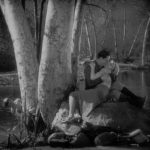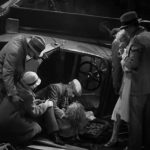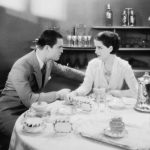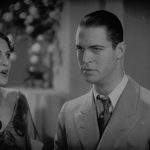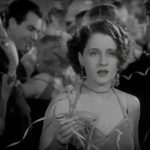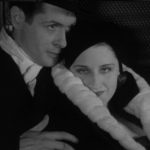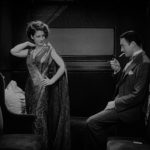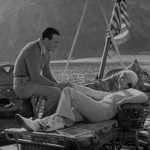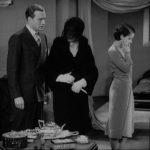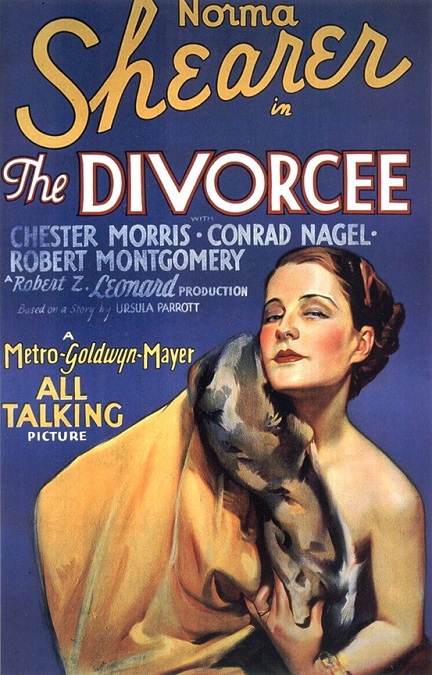

The Divorcee – 1930
This movie surprised me a little and there are a few things that you need to know to explain why. First it is important that this film was pre-code, meaning that it was made before the Hayes Code was created. It dealt with marital infidelity in a much more casually indulgent manner than it would have been allowed to under the code. Also, some of the drama was a little more intense than I was expecting. In fact, the lead actress, Norma Shearer, got a chance to play a pretty dramatic role and had the opportunity to prove that she was a better actress than most, earning herself the Academy Award for Best Actress that year.
The year was 1930, so the film had to have been developed and made in 1929. Some of the antiquated language seemed a bit of a giveaway, but only a little. The clothes, especially the female fashions, were also very indicative of the 20s. For example, the women all wore their skullcap-type hats that were very popular at the time. Their dresses seemed to be in a transitional phase, not quite flapper costumes any more, and yet still not the longer, more glamorous gowns of the 1930s. Also, the sets showed all those awesome Art Deco interior designs and architecture and that I love so much. Add to that the music that resembled Dixieland Jazz, and Model A Fords with rumble seats, and you have a pretty good picture of the late 20s.
All of these thing combined to give the audiences of the day what they were apparently looking for: wish fulfillment. Audiences wanted to go to the movies and see glamorous rich people living fast and exciting lives. They all needed to be beautiful. The only black people were servants or porters. It certainly was a different time.
Well, not everything was different. I could see the story being told in a modern movie. Shearer played Jerry, a working woman who falls in love with the poor Ted, played by Chester Morris, who we might remember from the 1928/29 nominee Alibi, and the 1929/30 nominee, The Big House. Here, he played a poor but hard working man who has career ambitions. The first time we see the couple, they are already making out with each other. Ted proposes to Jerry and they quickly make the announcement to their friends. Conrad Nagel played Paul, a man who has long been in love with Jerry. Learning that she is marrying Ted, Paul gets drunk. Unfortunately, he also insists on driving himself and several friends home.
Now, I have to mention the ridiculous rear projection of this scene. I know it was standard practice for driving scenes to put the actors in a stationary car and then show the road twisting and turning behind them. But this was done horribly here. In order to make Paul’s drunk driving seem more perilous, they sped up the image of the road behind them. He looked like he was driving about 90 miles per hour on a road that had more twists and turns than San Francisco’s Lombard Street. Trees and fences were flying back and forth across the screen in an impossible way. It didn’t make his driving look dangerous. It made it look impossible and almost comical. Anyway, the car crashes and nobody is hurt except for Dorothy, played by Helen Johnson. She survives, but is left with a scarred face. I also found it interesting that nobody seemed to be afraid for Dorothy’s injuries. They only cared that her beautiful face had been disfigured. How dare you make her ugly!
So Ted marries Jerry and Paul marries Dorothy out of guilt and pity. But then, after 3 years of marital bliss, Jerry finds out Ted had once gotten drunk and cheated on her. His response was that it meant nothing. So to balance the scales, Jerry sleeps with Ted’s best friend Don, played by Robert Montgomery. But then she feels so guilty, she confesses her infidelity. Ted’s response becomes very one-sided. He becomes so upset, he leaves her and files for divorce. In anger at Teds one-sided reaction, Jerry decides to be as slutty as she can be, though strangely enough, she seems to go out carousing with a lot of men, yet makes a point of turning them down when they try to get her into bed. When Paul learns that Jerry is single again, he tries to leave Dorothy so that he can run away with her, saying that he never really loved his wife.
I also thought it interesting that, they used cheap ways to imply Dorothy’s scarred face without ever showing it. There was a brief hospital wedding scene that showed her head all bandaged up. Then there was the scene where Dorothy begs Jerry not to steal her husband, despite the fact that she knows he doesn’t love her. She wore a hat with a heavy veil covering her entire face, implying that she was so horribly ashamed of her disfigured face that she could never show it in public.
Well, to make a long story short, after spending a few years apart, Jerry and Ted realize that they still love each other and get back together. The end. Of course, as was the trend in movies from that era, the conflict lasted until the last minute or two of the film, then resolved so quickly that it left my head spinning.
